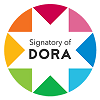0.12% Chlorhexidine and 5% Acetic Acid as disinfectants for toothbrushes
DOI:
https://doi.org/10.37135/ee.04.08.08Keywords:
Disinfection, Microorganisms, Toothbrushing, Acetic Acid, ChlorhexidineAbstract
The present study was of a comparative observational type. 40 OralDent toothbrushes were analyzed for this reserach, which were used for a month by the members of the “Simón Bolívar” Taxi Cab Company in the city of Riobamba, Ecuador. It aimed to compare the efficacy of 5% acetic acid and 0.12% chlorhexidine as disinfectants. The microbiological analysis showed the presence of microorganisms in the toothbrushes used by the individuals who voluntarily gave them up for the study, for exmaple: C. albicans in a greater proportion, followed by S. viridans, S. epidermidis and S. mutans, A. tubingensis, K. pneumoniae, E. coli, E. faecalis, P. vulgaris. Once the disinfection process with 0.12% chlorhexidine was generated in the samples with microorganism concentrations of 100,000 CFU / mL, there was a decrease to values less than 20,000 CFU / mL or its complete elimination. 5% acetic acid achieved asepsis in 100% of toothbrushes regardless of the age or gender of the individual who used it.
Downloads
References
Sánchez-Pérez L, Sáenz Martínez LP, Molina-Frechero N, et al. Caries risk assessment. Diagnosis and treatment suggestions. Rev ADM [Internet]. 2018 [citado 13 May 2019]; 75(6): 340-349. Disponible en: https://www.medigraphic.com/pdfs/adm/od-2018/od186h.pdf.
Ortiz N. Desinfección de cepillos dentales inoculados con Streptococcus mutans usando vinagre, clorhexidina y cloruro de cetilpiridinio [tesis en Internet]. Quito: Universidad Central del Ecuador; 2017 [citado 13 May 2019]. Disponible en: http://www.dspace.uce.edu.ec/bitstream/25000/9426/1/T-UCE-0015-548.pdf.
Eichchenauer J, Bremen J, Ruf S. Microbial contamination of toothbrushes during treatment with multibracket appliances. Head Face Med [Internet]. 2014 [citado 14 May 2019]; 10 (43). Disponible en: https://www.ncbi.nlm.nih.gov/pmc/articles/PMC4197314/. doi: 10.1186/1746-160X-10-43.
Prussin A, Marr L. Sources of airborne microorganisms in the built environment. Microbiome [Internet]. 2015[citado 22 May 2019]; 3(78). Disponible en: https://www.ncbi.nlm.nih.gov/pubmed/26694197. doi: 10.1186/s40168-015-0144-z.
Contreras A, Arce R, Botero J, Jaramillo A, Betancourt M. Toothbrush contamination in family members. Rev. Clin. Periodoncia Implantol. Rehabil.Oral [Internet]. 2010 [citado 24 May 2019]; 3(1): 24-26.
Llop A, Valdés- Dapena M, Zuazo J. Efecto de los agentes físicos y químicos sobre los microorganismos. En: Microbiología y parasitología médicas. Vol 1. La Habana: Ciencias Médicas; 2001.
Negroni M. Microbiología Estomatológica Fundamentos y guía práctica. 2ª ed. Buenos Aires: Medica Panamericana; 2009.
Liébana J. Microbiología Oral. 2a ed. México: Mc Graw-Hill Interamericana; 1997.
Font E. Antisépticos y desinfectantes. Offarm [Internet]. 2001 [citado 26 May 2019]; 20(2): 55-64. Disponible en: https://www.elsevier.es/es-revista-offarm-4-articulo-antisepticos-desinfectantes-13780.
Villafranca F, Fernández M, García A, Hernández L, López L, Perillán C et al. Manual del Técnico superior en higiene bucodental. 1ª ed. Madrid: MAD; 2005.
Martínez M. Guía de Antisépticos y Desinfectantes [Internet]. Madrid: Editorial Ingesa; 2013. [citado 27 May 2019]. Disponible en: http://www.ingesa.mscbs.gob.es/bibliotecaPublicaciones/publicaciones/internet/docs/Guia_Antisepticos_desinfectantes.pdf.
Ellepola A, Samaranayake L. Adjunctive use of chlorhexidine in oral candidoses: a review. Dis. Oral [Internet]. 2001 [citado 27 May 2019]; 7(1): 11-17. Disponible en: https://www.ncbi.nlm.nih.gov/pubmed/11354914.
Herrera L, Caballero S, Claro A, Torres H, Martínez C. Actividad antimicrobiana del ácido acético 5% y el cepillo Colgate 360° antibacterial®: un estudio in vitro. Rev Fac Odontol Univ Antioq [Internet]. 2012 [citado 29 May 2019]; 24 (1): 62-75. Disponible en: http://www.scielo.org.co/scielo.php?script=sci_arttext&pid=S0121-246X2012000200005&lng=en&nrm=iso&tlng=es.
Gaona M. Estudio comparativo entre el vinagre y el triclosán como sustancias alternativas para la desinfección de cepillos dentales [tesis en Internet]. Quito: Universidad de las Américas; 2014 [citado 29 May 2019]. Disponible en: http://dspace.udla.edu.ec/bitstream/33000/1874/3/UDLA-EC-TOD-2014-20.pdf.
De la Cruz R, Viteri J. Contaminación microbiana en cepillos dentales con y sin protección de un estuche. Polo del Conocimiento [Internet]. 2017 [citado 29 May 2019]; 7(2): 133-149. Disponible en: https://polodelconocimiento.com/ojs/index.php/es/article/view/307.
Rivera S, Yevenes I, Reyes J, Norero H. Efecto comparativo de nuevo colutorio-gel de clorhexidina con colutorios comerciales en el crecimiento de la placa en 24 horas. Avances en Periodoncia [Internet]. 2006 [citado 29 May 2019]; 18(3): 163-169. Disponible en: http://scielo.isciii.es/scielo.php?script=sci_arttext&pid=S1699-65852006000300005#back.
Martinez C, Forguione W, Herrera L, Prada S, Anaya J, Plata A, Torres H. Soluciones de uso común en el hogar como alternativa para desinfectar el cepillo dental: un estudio In vitro. UstaSalud [Internet]. 2010 [citado 10 Jun 2019]; 9(2): 75-82. Disponible en: http://revistas.ustabuca.edu.co/index.php/USTASALUD_ODONTOLOGIA/article/view/1157/0.
Ortiz N. Desinfección de cepillos dentales inoculados con Streptococcus mutans usando vinagre, clorhexidina y cloruro de cetilpiridinio [tesis en Internet]. Quito: Universidad Central del Ecuador; 2017 [citado 10 Jun 2019]. Disponible en: http://www.dspace.uce.edu.ec/bitstream/25000/9426/1/T-UCE-0015-548.pdf.
Gujjari S, Gujjari A, Patel P, Shubhashini P. Comparative evaluation of ultraviolet and microwave sanitization techniques for toothbrush decontamination. Journal of International Society of Preventive & Community Dentistry [Internet]. 2011[citado 11 Jun 2019]; 1(1): 20-26. Disponible en: https://www.ncbi.nlm.nih.gov/pmc/articles/PMC3894078/. doi: 10.4103/2231-0762.86383.
Salazar S, Zurita M. Presencia de microorganismos en cepillos dentales y su desinfección con H2O2. Revista Científica Dominio de las Ciencias [Internet]. 2016 [citado 11 Jun 2019]; 2: 155-167. Disponible en: https://dominiodelasciencias.com/ojs/index.php/es/article/view/73/65.



















